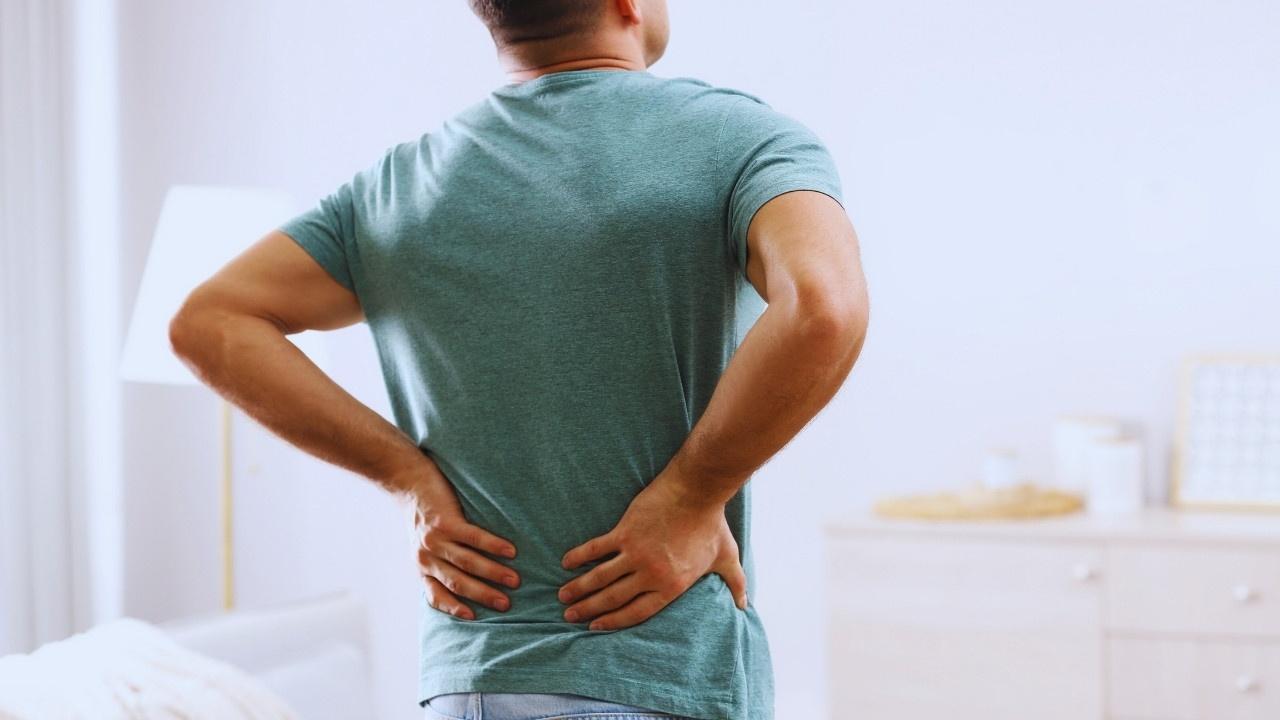
Join 10k+ people to get notified about new posts, news and tips.
Do not worry we don't spam!

Post by : Anis Farhan
Chronic pain impacts more than just the physical body. It alters sleep, mood, mobility, productivity, and relationships. In contrast to transient pain, chronic pain can persist, fluctuate, or intensify during stress, weather changes, or unhealthy habits. Many endure it silently, believing pain is a daily burden they must bear.
However, chronic pain requires care with a gentle, consistent approach. While medical advice is essential, daily routines at home are transformative. Minor adjustments in movement, diet, rest, and emotional wellness can help reduce pain severity and facilitate a more manageable life.
Pain management isn’t about an instant solution; it’s about developing supportive practices that make daily life more controllable and less painful.
The human body benefits from structure. A regular schedule for waking, sleeping, eating, and resting helps diminish inflammation and stress. Irregular routines can exacerbate chronic pain, especially in conditions like fibromyalgia, arthritis, and others.
• Wake up consistently at the same time
• Never skip meals
• Keep a regular sleep schedule
• Incorporate regular movement intervals
• Include short, frequent breaks
These practices help stabilize hormones and minimize pain episodes.
Many individuals with chronic pain hesitate to move due to fear of worsening their condition. Yet inactivity often leads to stiffness, poor circulation, and muscle weakness.
Regular movement is an effective approach to managing chronic pain.
A low-impact exercise that enhances blood circulation, eases tight muscles, and lifts mood.
Gentle stretches relieve stiffness and boost flexibility, targeting areas like the neck and back.
Gentle yoga practices enhance strength, posture, and relaxation, ideal for those with chronic discomfort.
Exercising in warm water alleviates joint pressure for those with arthritis or back pain.
Controlled movements strengthen the core, providing support for the spine.
Movement should be gentle and non-judgmental; if sharp pain occurs, stop immediately. Mild discomfort is normal for unused muscles.
Bad posture can continuously strain muscles and joints, leading to chronic issues. Many people sit for long periods unaware of the stress poor posture inflicts on the spine.
• Keep a straight back with relaxed shoulders
• Ensure feet rest flat on the ground
• Avoid excessive leaning
• Use a cushion for lower back support
• Position screens at eye level
• Shift positions every 20-30 minutes
Small adjustments can significantly reduce the load on the body and lessen chronic pain over time.
Temperature therapies can alleviate pain, manage flare-ups, and boost flexibility.
• Stiff muscles
• Chronic lower back pain
• Joint tightness
• Stress-induced muscle tension
Use heating pads, warm compresses, or hot baths.
• Swelling or inflammation
• Sudden pain flare-ups
• Acute injuries
• Post-activity soreness
Utilize ice packs or cold compresses for relief.
Remember, heat relaxes, while cold reduces swelling. Alternate as needed.
When pain escalates, our breathing tends to become shallow, leading to increased tension. Deep, controlled breathing can trigger relaxation, easing muscle tightness.
Inhale for 4 seconds → Hold for 4 → Exhale for 4 → Hold for 4
Place your hand on your belly, breathe deeply while your belly rises, and exhale slowly.
Inhale for 4 → Hold for 7 → Exhale for 8
These simple strategies significantly calm the nervous system.
Insufficient sleep can worsen chronic pain, while pain can interfere with sleep. It’s essential to develop habits that facilitate unwinding.
• Keep the bedroom cool and dark
• Avoid screens 1 hour before sleep
• Use suitable pillows
• Establish a calming bedtime routine
• Opt for light evening meals
• Limit caffeine to earlier in the day
Improving sleep quality is key to managing pain over time.
Your diet directly impacts inflammation levels, energy, recovery, and mood—all pivotal in managing chronic pain.
• Leafy greens
• Antioxidant-rich fruits
• Nuts and seeds
• Whole grains
• Olive oil
• Fatty fish (if included in your diet)
• Turmeric with black pepper
• Ginger
• Lentils and beans
• Sugary items
• Deep-fried selections
• Processed snacks
• Excess salt
• Sugary drinks
• Frequent fast food intake
Balance and small, gradual dietary adjustments are key.
Lack of adequate hydration can lead to muscle tightness and headaches, worsening joint pain. Many with chronic pain tend to drink insufficient water.
• Sip water continually throughout the day
• Include hydrating foods (fruits, soups)
• Limit caffeine if it exacerbates symptoms
Staying hydrated aids tissue flexibility and alleviates fatigue.
Chronic pain can affect mental wellness, significantly impacting how pain is perceived. Stress intensifies pain signals, leading to discomfort.
Mindfulness practices help break the tension cycle by stabilizing attention and minimizing stress levels.
• Guided meditations
• Breath observation
• Gratitude journaling
• Gentle walks
• Calm awareness of sensations
You need not dedicate hours to mindfulness; even a few minutes can provide relief.
Recording pain patterns can illuminate triggers. Many discover meaningful insights once they document their experiences.
• Intensity of pain
• Daily activities
• Foods consumed
• Quality of sleep
• Stress levels
• Weather impacts
• Energy variations
Tracking these factors can help in elucidating patterns over time.
Weaker muscles can exacerbate pain by placing undue burden on joints. Gentle strength training can provide crucial support around painful areas.
• Pelvic tilts
• Bridges
• Cat-cow stretches
• Gentle core strengthening
• Straight leg raises
• Wall sits
• Seated leg lifts
• Resistance band exercises
• Chin tucks
• Shoulder blade squeezes
• Gentle neck rotations
Take it slow and prioritize consistency over intensity.
Extended sitting or standing can exacerbate pain.
Every 20 minutes, stand and move for 20 seconds.
Frequent breaks:
• Enhance blood circulation
• Minimize stiffness
• Prevent flare-ups
• Soothe nerve irritation
Consider setting reminders!
Where you live can significantly affect your comfort.
• Select ergonomic furniture
• Keep essentials within reach
• Utilize proper support for your sleeping environment
• Use soft lighting to cultivate peace
• Store frequently used items at waist height
• Keep the area organized to avoid unnecessary bending
Your home can foster healing without extensive changes.
Chronic pain necessitates a careful balance between activity and rest. Too much stillness can cause stiffness, while excessive activity can trigger flare-ups.
• Move if you feel stiffness
• Rest if pain sharpens
• Take breaks between activities
• Alternate between heavier and lighter tasks
Maintaining this balance can help manage symptoms effectively.
Navigating chronic pain can be a gradual journey. Each step forward counts, even when progress feels inconsistent. Consistency, not perfection, is crucial.
Remember:
• Your efforts are impactful
• Little changes can yield significant results
• You’re not failing if pain recurs
• Recovery isn’t always linear
Building strength comes with time and steady care.
Chronic pain is not a one-day fix, but by implementing consistent self-care routines, the body can learn to manage discomfort efficiently. Gentle movement, mindful breathing, proper nutrition, and emotional grounding work collectively to alleviate pain and enhance quality of life.
Self-care complements medical advice and should not replace it. By nurturing the right habits, chronic pain can become manageable, allowing for a more stable and hopeful life.
This article is meant for informational purposes only and not for medical advice. Those experiencing persistent or worsening pain should speak to a qualified healthcare provider for tailored guidance.










MLB Awards Highlight deGrom, Acuna Jr., Ohtani, and Judge
Jacob deGrom and Ronald Acuna Jr. shine in MLB awards, claiming comeback honors while Ohtani and Jud

Ronaldo Steers Portugal in Critical World Cup Qualifier Against Ireland
Portugal, led by Cristiano Ronaldo, faces Ireland in a decisive World Cup qualifier, both teams vyin

New York Islanders Overcome Vegas with Overtime Win, 4-3
Jean-Gabriel Pageau nets a short-handed OT goal, leading the Islanders to a thrilling 4-3 victory ov

Haaland Shines as Norway Triumphs 4-1 Against Estonia
Erling Haaland's leadership fuels Norway's 4-1 win over Estonia, enhancing World Cup hopes for the f

Hawks Secure Victory Over Jazz; Suns and Raptors Triumph in High-Scoring Showdowns
The Atlanta Hawks, Phoenix Suns, and Toronto Raptors notch wins with standout performances, showcasi

India's Men's Recurve Team Clinches Asian Gold After 18 Years
After 18 years, India's men's recurve team triumphs in Dhaka, winning gold at the Asian Archery Cham